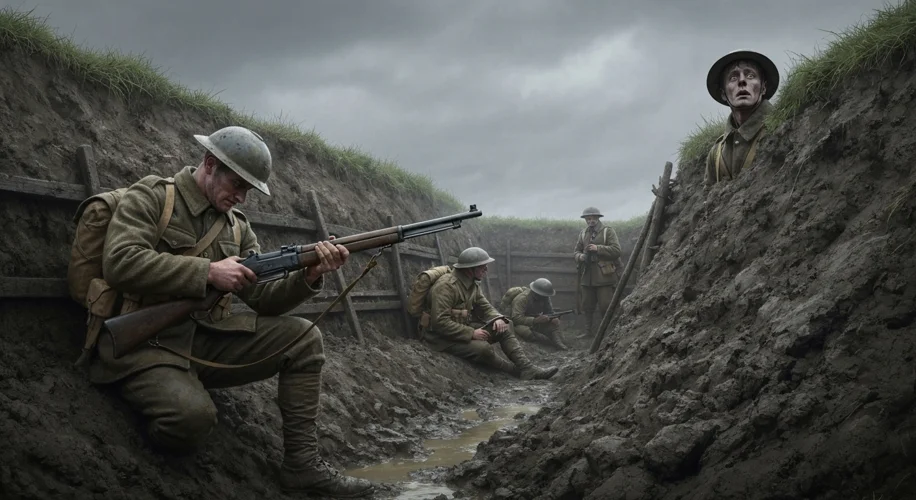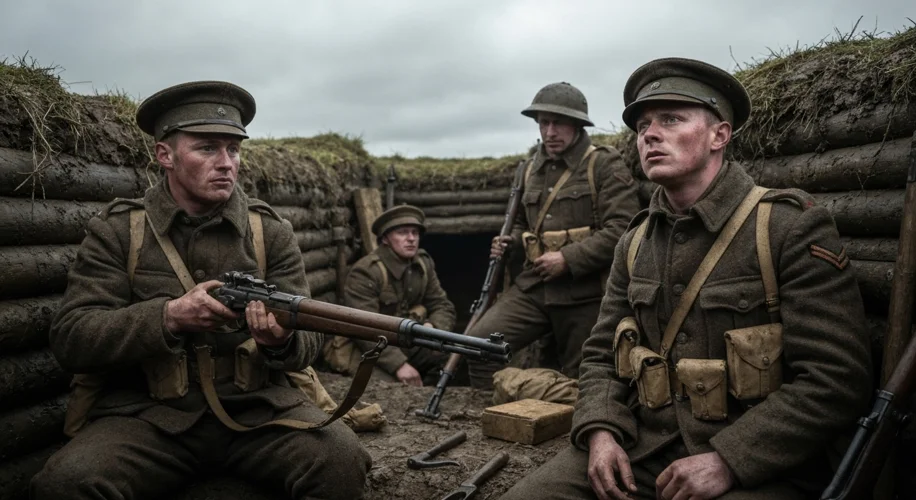The Great War, a conflict that reshaped the globe and etched itself into the collective memory, continues to captivate storytellers. From the visceral trenches of the Western Front to the sweeping narratives of diplomatic intrigue, World War I has been immortalized in countless films, novels, and documentaries. Yet, as audiences immerse themselves in these dramatic portrayals, they often encounter a version of history that, while compelling, deviates significantly from the documented reality.
One of the most pervasive inaccuracies concerns the very image of the soldiers. Films often depict British Tommies in perfectly pressed uniforms, marching in neat lines across open fields, even deep into the war. The reality was far grittier. By 1916, after years of brutal attrition, uniforms were often ill-fitting, patched, and caked in the ubiquitous mud. The romanticized image of the perfectly uniformed soldier charging into battle rarely reflects the desperate, often muddy and dishevelled state of men facing machine-gun fire.

Technology, too, is frequently misrepresented. The speed at which tanks, aircraft, and machine guns evolved and were deployed is often glossed over. For instance, early war films might show tanks as ubiquitous battlefield tools from the outset, when in fact, their introduction was tentative and their impact limited in the initial stages. Similarly, aerial combat, often depicted as sophisticated dogfights reminiscent of World War II, was in its infancy. Early aircraft were fragile, pilots lacked extensive training, and aerial engagements were often more about reconnaissance and limited ground attack than the thrilling duels popularized in cinema. The infamous “Red Baron,” Manfred von Richthofen, achieved his kills in aircraft that would seem primitive by later standards, relying on skill and positioning rather than advanced weaponry.
The tactics employed on the battlefield also suffer from simplification. The ‘over the top’ charge, while a feature of trench warfare, is often portrayed as a universally disastrous tactic. While disastrous it was, the nuances of its application, the varying artillery bombardments preceding assaults, and the specific objectives (often gaining mere yards of devastated ground) are frequently reduced to a simple, suicidal wave of men. The complex interplay of artillery, machine guns, and eventually, creeping barrages, is difficult to convey, leading to simplified, albeit dramatic, representations. The Gallipoli campaign, for instance, is often reduced to a heroic but futile charge, overlooking the intricate planning and the critical naval aspects, as well as the fierce Ottoman resistance which was underestimated.
Key figures and events are not immune to distortion. The often-heroic portrayal of generals, or conversely, their depiction as entirely out of touch, can oversimplify the immense pressure and complex decision-making they faced. The assassination of Archduke Franz Ferdinand, while the catalyst for the war, is sometimes depicted as a straightforward act of Serbian nationalism, neglecting the intricate web of alliances, imperial ambitions, and miscalculations that truly ignited the conflict.
Why do these inaccuracies persist? Part of the reason lies in the inherent challenge of translating the sheer horror and complexity of World War I into digestible narratives for a mass audience. Hollywood, in particular, often prioritizes drama and visual spectacle over historical fidelity. The desire to create compelling characters, relatable heroes, and clear villains can lead to the sanding down of the messy, ambiguous realities of war. Moreover, the sheer volume of information and the often-unseen technological and tactical shifts can be overwhelming, making simplification a tempting, if problematic, path.
Understanding these discrepancies is crucial. It’s not about diminishing the artistic merit of films or books, but about fostering a more critical engagement with historical representations. When we watch a film set in World War I, it’s valuable to remember that the gleaming bayonets and the perfectly timed artillery barrages are often artistic license. The true story of the Great War is found not just in the heroic charges, but in the quiet moments of endurance, the desperate struggles for survival in the mud, and the complex political machinations that set the world ablaze. By recognizing these inaccuracies, we can appreciate the creative interpretations while still striving for a deeper, more nuanced understanding of this pivotal conflict.
Ultimately, media can serve as a powerful gateway to history, sparking curiosity and introducing viewers to significant events. However, it is our responsibility as viewers and readers to approach these narratives with a discerning eye, seeking out the factual underpinnings that breathe life into the compelling, yet often embellished, stories of the past.

